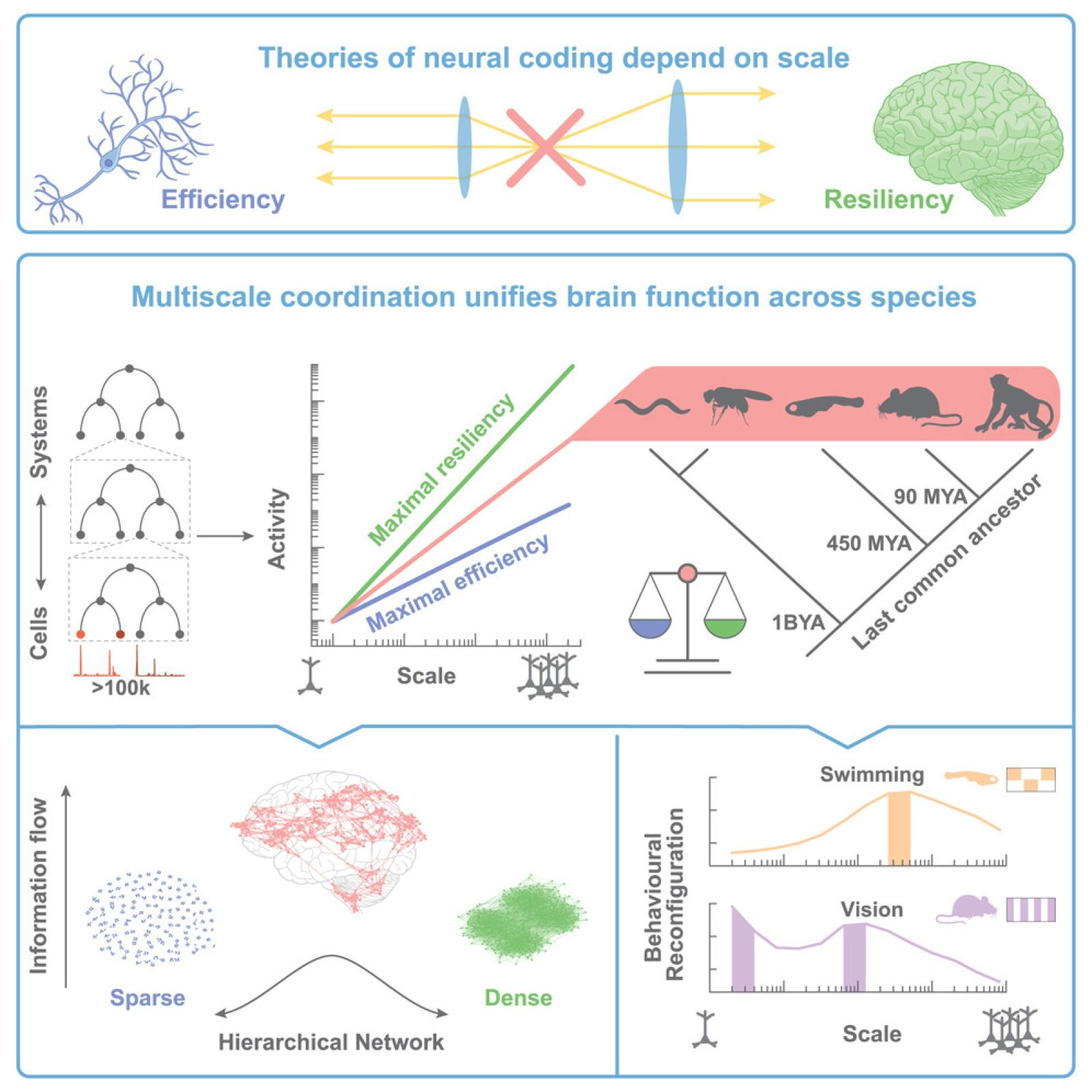Follow us on Google News (click on ☆)

Illustration from Pixabay
Neurons, these essential nerve cells, work both individually and in networks. Contrary to a widespread assumption, their activity is not exclusively dedicated to specific tasks. In reality, only 40% of neuronal efforts are focused on such tasks, while the remainder serves collective coordination. This discovery challenges the classical view of brain activity.
Using calcium imaging, a recent technique that employs fluorescent sensors sensitive to different levels of calcium, scientists observed the behavior of thousands of neurons in real-time. This technological advancement has allowed the analysis of signals previously unreachable, offering an unprecedented window into neuronal dynamics.
The results, published in Cell, show that neuron activity follows a fractal structure. This hierarchical organization, where each level reflects those preceding and succeeding it, optimizes information flow in the brain. This strategy combines efficiency and resilience, a key balance for coping with ever-changing environments.
Beyond humans, this fractal structure has been observed in species as diverse as fruit flies, zebrafish, mice, monkeys, and even nematodes. Despite over a billion years of evolution separating these organisms, the persistence of this organization suggests a universal principle of information processing.
Computer simulations conducted by the team confirmed that this fractal hierarchy enhances the brain's adaptability. By constantly adjusting the coordination between neurons, the brain maintains a subtle balance: stable enough for deep thinking, yet agile enough to react quickly.

In zebrafish, for example, this organization enables fluid swimming even in changing conditions. In mice, it ensures precise vision by mobilizing specific neuronal codes at the cellular level, although this also makes them sensitive to disruptions.
The study suggests that this division of efforts – half collaboration, half individual work – transcends the domain of the brain. This principle could apply to other complex systems, whether biological or artificial. The researchers see it as a key to understanding how networks, whether natural or man-made, can combine efficiency and robustness.
What is a fractal hierarchy in the brain?
A fractal hierarchy is an organization where each element of a system reflects the characteristics of the higher and lower levels. In the brain, this means that neurons organize themselves into nested networks, with each scale replicating the overall structure.
This model optimizes information transmission. Small networks handle specific tasks, while larger groups ensure overall coordination. This allows the brain to function efficiently while remaining adaptable.
The fractal hierarchy appears across different species, from zebrafish to humans. It thus seems to be a fundamental evolutionary principle for processing information.
This organization offers a key advantage: it balances stability and flexibility, allowing the brain to quickly respond to changes or disruptions without compromising its functioning.
How do neurons work in teams?
Neurons don't just function individually. They form interconnected networks where a portion of their activity is dedicated to specific tasks, while the other serves collaboration.
This collaboration relies on information transmission via synapses, where electrical signals are converted into chemical or electrical messages. This enables smooth coordination between cells.
Tools like calcium imaging show that these interactions follow a fractal hierarchical model. Small groups of neurons integrate into larger ensembles to maximize efficiency.
This teamwork is essential for the brain's adaptability. It allows us to respond to everyday challenges while ensuring stable and lasting operation.